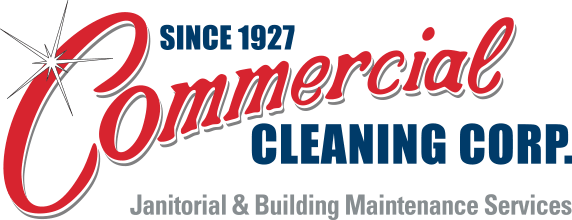Finding a trusted professional cleaning service to maintain your building—especially when you work in the healthcare industry—can be challenging. It takes an experienced team to understand the nuances of working in a care environment and apply up-to-date cleaning best practices to a hospital, which relies on clean and sanitized areas to function properly and reduce health risks for patients, staff and visitors. If you’re curious about the skills and expertise that a cleaning service needs today or you want to confirm that your current team is doing a great job, review some of the key things they should know about how to make your facility safe and spotless.
Hospital Cleaning Best Practices
Medical and healthcare facilities follow strict requirements for cleaning, disinfecting and sanitizing, which means in-house and outsourced cleaning teams must be familiar with these requirements in order to uphold high standards and remain compliant. Most third-party cleaning companies come equipped with cleaning packages, product lists, information on cleaning techniques and tools and detailed reports that reveal their compliance with applicable regulations and their understanding of healthcare cleaning best practices. Your cleaning service team should already know how to service your facility appropriately, and after getting to know your needs and the way your organization runs, they will be able to develop a custom cleaning program fit for your unique space.
- Advanced site-specific cleaning technology and tools
- Proper chemical cleaners for healthcare applications
- Attention and care when cleaning specialized medical equipment
- Additional focus on high-touch, high-traffic areas
- Cleaning staff with experience working in care facilities
- Strict supervision of cleaning technicians and cleaning programs
Disinfecting, Sterilizing & Cleaning Methods
Many people use the terms disinfecting and sterilizing interchangeably in everyday life, but in the business of hospital cleaning, these terms are distinct. To disinfect a surface is to get rid of most of the harmful microorganisms present. To sanitize a surface is to kill all harmful and harmless microorganisms and spores present. Your commercial cleaning team understands the difference between these approaches to keeping surfaces and objects clean and ready for safe use in a hospital environment, and they should be well-versed in modern cleaning products, tools and tactics needed to get the job done.
Part of staying on top of the latest techniques and methods in the cleaning industry is understanding the importance of green cleaning and knowing how to implement a green cleaning program in a hospital. Green cleaning itself is the practice of using specific cleaning methods and eco-friendly products that are healthy for people and the environment. Most experienced hospital cleaning service companies are familiar with this cleaning approach and can recommend a green cleaning plan or elements of green cleaning that suit your facility’s needs.
| Disinfect | Sanitize |
| Eliminate harmful microorganisms | Eliminate harmful and harmless microorganisms and spores |
| Apply to surfaces and air | Apply to medicine, food, surgical equipment, food |
| Use alcohols, bleach, detergents, heavy metals | Use heat, chemicals, pressure, filtration |
Current Healthcare Regulations
Commercial cleaners working to maintain healthcare spaces must keep the regulations and best practices of important industry organizations in mind. They often develop custom cleaning programs for their clients, which can range from doctor’s offices and clinics to hospitals and urgent care centers, that utilize the recommended cleaning techniques from these institutions and take into account the information protection regulations that maintain the privacy of patients. Make sure to ask your current cleaning service or prospective cleaning partner if they are compliant with the regulations your operations must follow or if they have ways to support your organization’s own compliance through cleaning best practices.
- The Association for the Healthcare Environment (AHE)
- The Association of periOperative Registered Nurses (AORN)
- The Centers for Disease Control and Prevention (CDC)
- The Centers for Medicare & Medicaid Services (CMS)
- The Environmental Protection Agency (EPA)
- The Health Information Portability & Accountability Act (HIPAA)
- Occupational Safety and Health Administration (OSHA)
Patient, Staff & Visitor Communication
Hospital cleaning teams are typically well-equipped to bring the friendly demeanor and respect that sensitive environments demand. This means that cleaning staff know how to move around rooms quickly, safely and respectfully and understand how to effectively communicate with the patients and staff they come into contact with while performing their jobs. Staff trained by professional healthcare cleaning companies boast exceptional communication and interpersonal skills to have positive interactions with patients, nurses, doctors and visitors.
- Taking time to respond to patients, doctors and visitors who say hello
- Moving through rooms quickly and quietly for nondisruptive cleaning
- Offering an empathetic ear to patients and visitors who want to chat
All of these seemingly small interactions add up to mean so much for the people who work, visit and receive care in a hospital setting. Trained hospital housekeepers understand the value of compassion in healthcare and how it relates to their work keeping these environments safe, clean and productive for all building occupants. A commercial cleaning company that doesn’t put this concept into practice simply cannot deliver the same high-quality services as a company that does. Observe your cleaning staff to make sure they work well around your patients and staff or inquire about a prospective cleaning service’s communication practices and performance.
Does your cleaning service know all of this and put this knowledge into practice at your facility?
Contact us for a healthcare facility cleaning consultation to learn how we can help you create a safer space for your patients and staff.

